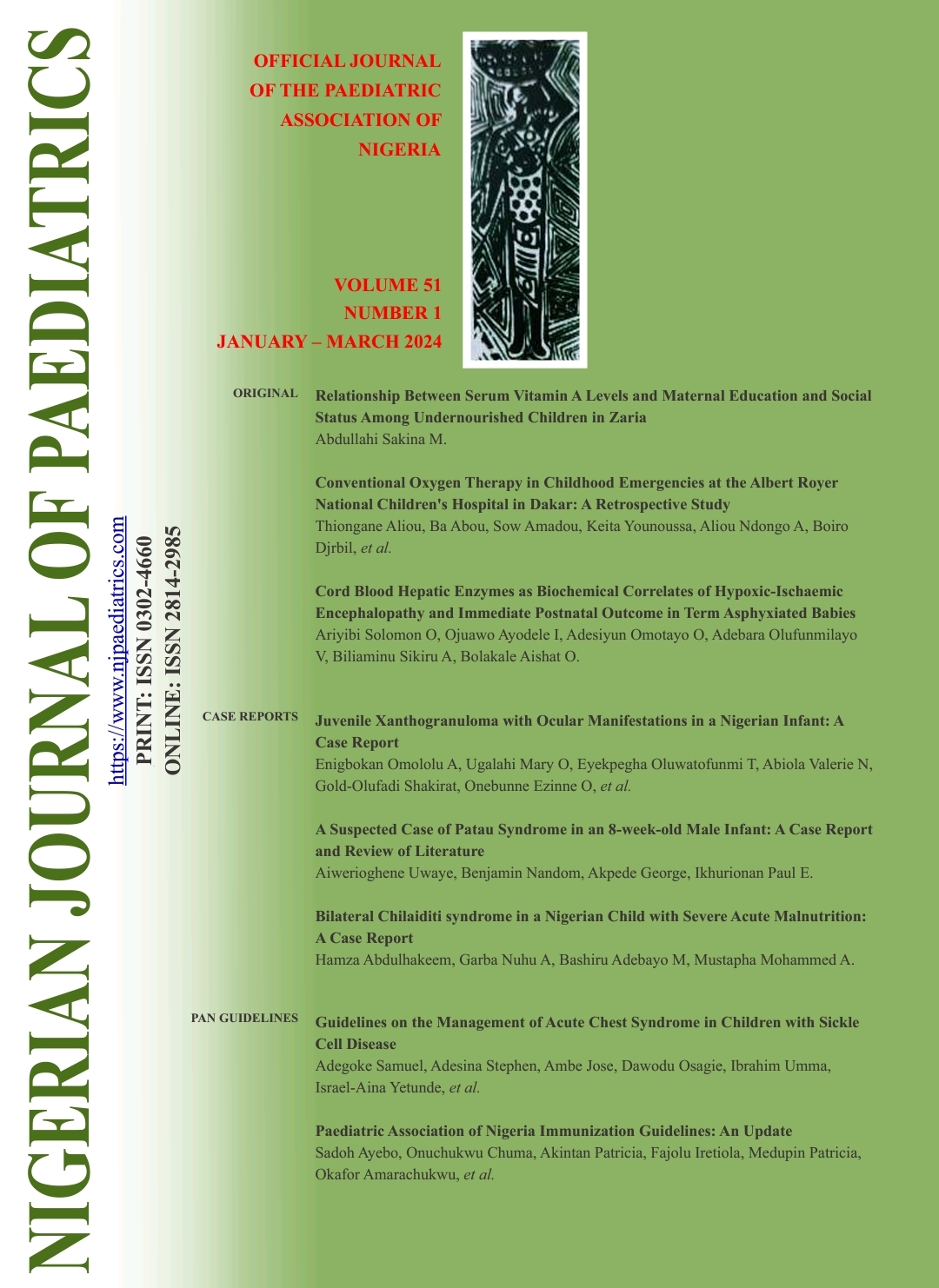Hydroxyurea use in children with Sickle Cell Disease; Congestive Cardiac Failure in Children; Coma in Children; Oesophageal Atresia
Abstract
Sickle Cell Disease (SCD) is a global health problem, although about 90% of the burden occurs in Low-and Middle-Income Countries (LMICs). Globally, about 300,000 babies are born with the disease annually, with about 150,000 of them in Nigeria alone. The Nigeria 2018 Demographic Health Survey estimated the average birth prevalence of homozygous sickle cell disease (HbSS) as 1·21% and 0·24% for the heterozygous state HbSC.1,2 SCD is a single gene mutation characterized by GAG to GTG transversion resulting in the replacement of soluble glutamic acid by insoluble valine at the sixth position of the β-globin chain (β6 Glu →Val, GAG>GTG).3 Clinically, it typically manifests as episodic ischaemia and hypoxia, resulting in recurrent pains (the disease hallmark), chronic haemolysis and increased predisposition to infections.
Downloads
Published
Issue
Section
License
Copyright (c) 2025 NIGERIAN JOURNAL OF PAEDIATRICS

This work is licensed under a Creative Commons Attribution 4.0 International License.
This is an open-access journal, and articles are distributed under the terms of the Creative Commons Attribution 4.0 License, which allows others to remix, transform, and build upon the work even, commercially, as long as appropriate credit is given to the author, and the new creations are licensed under identical terms

